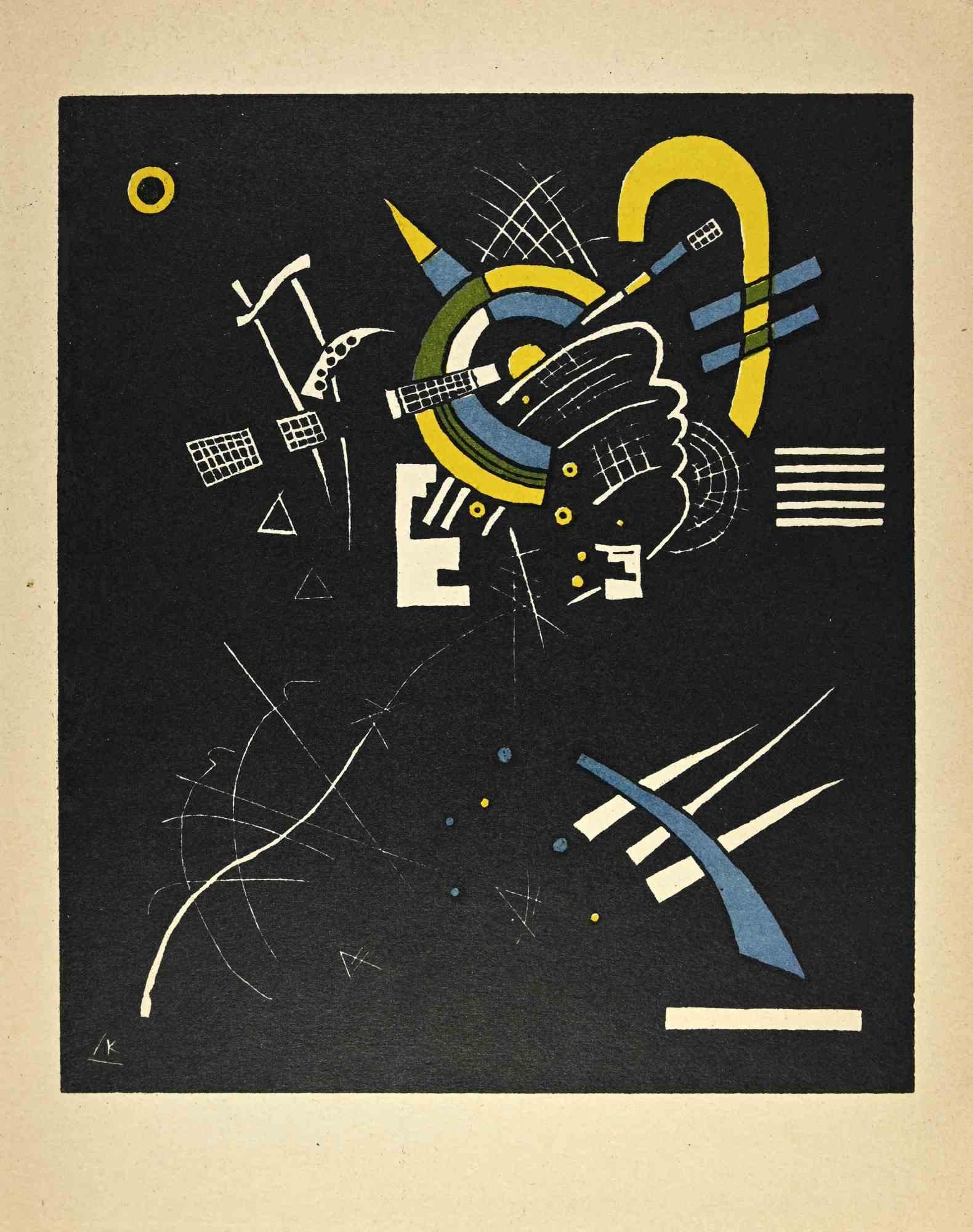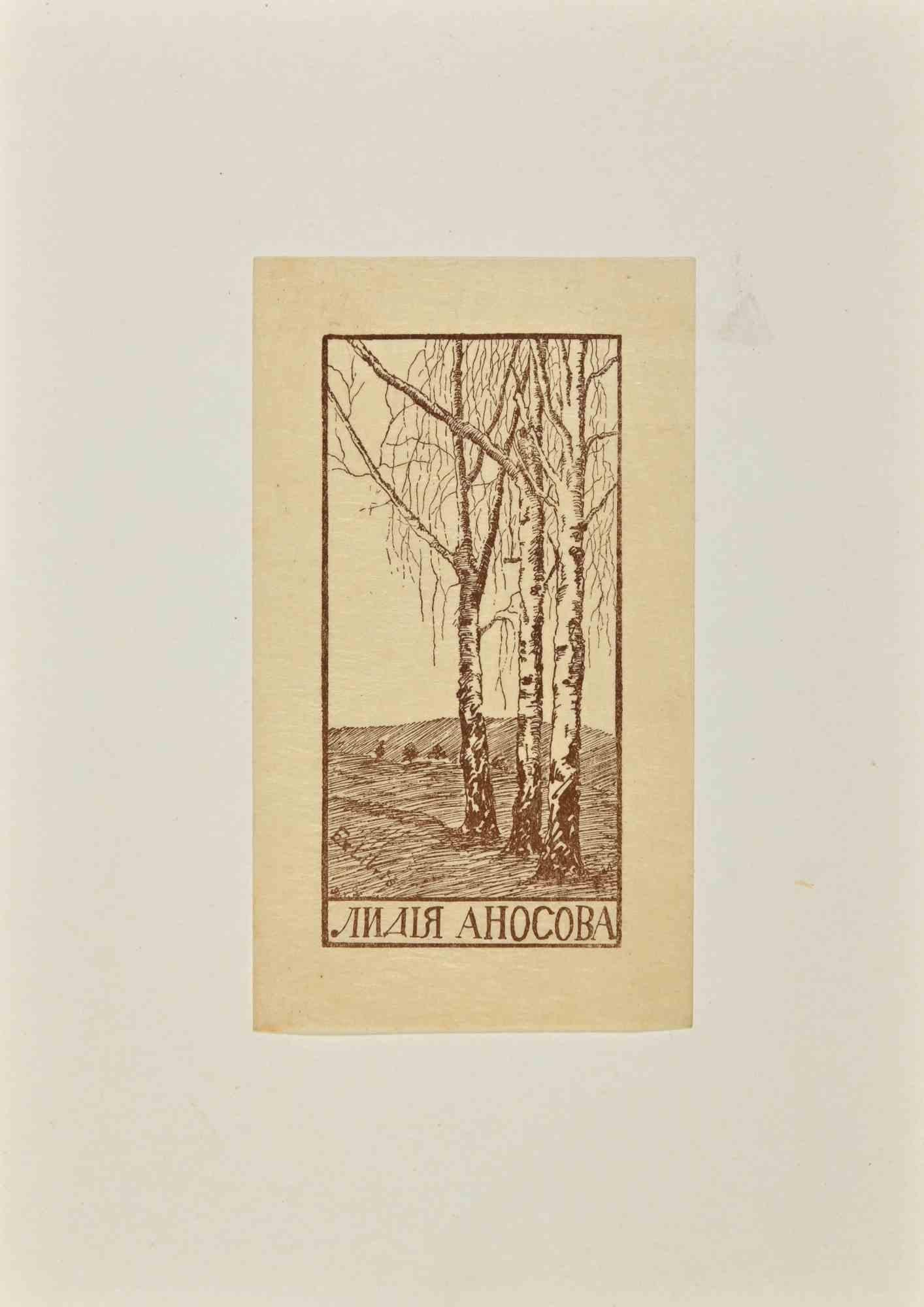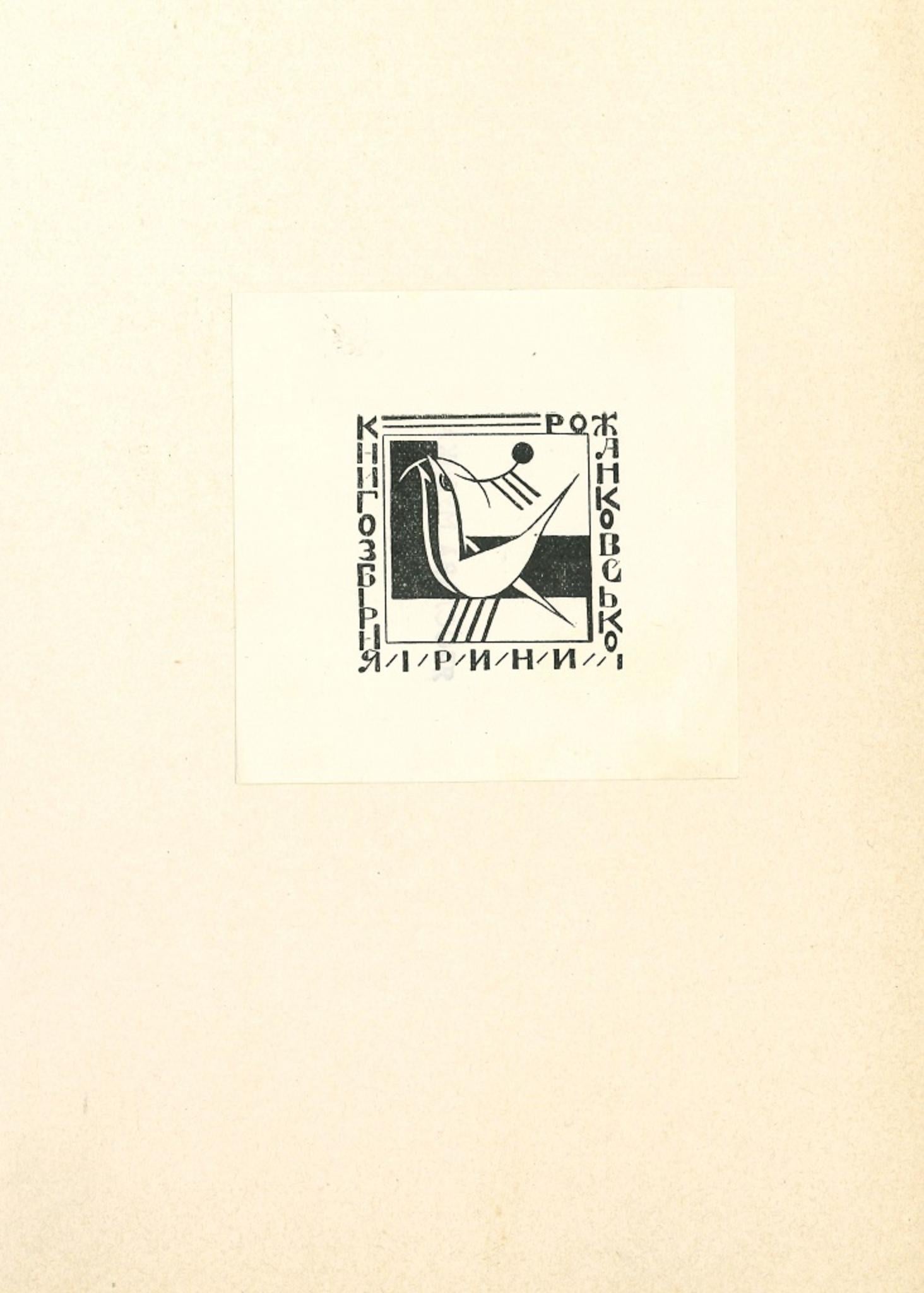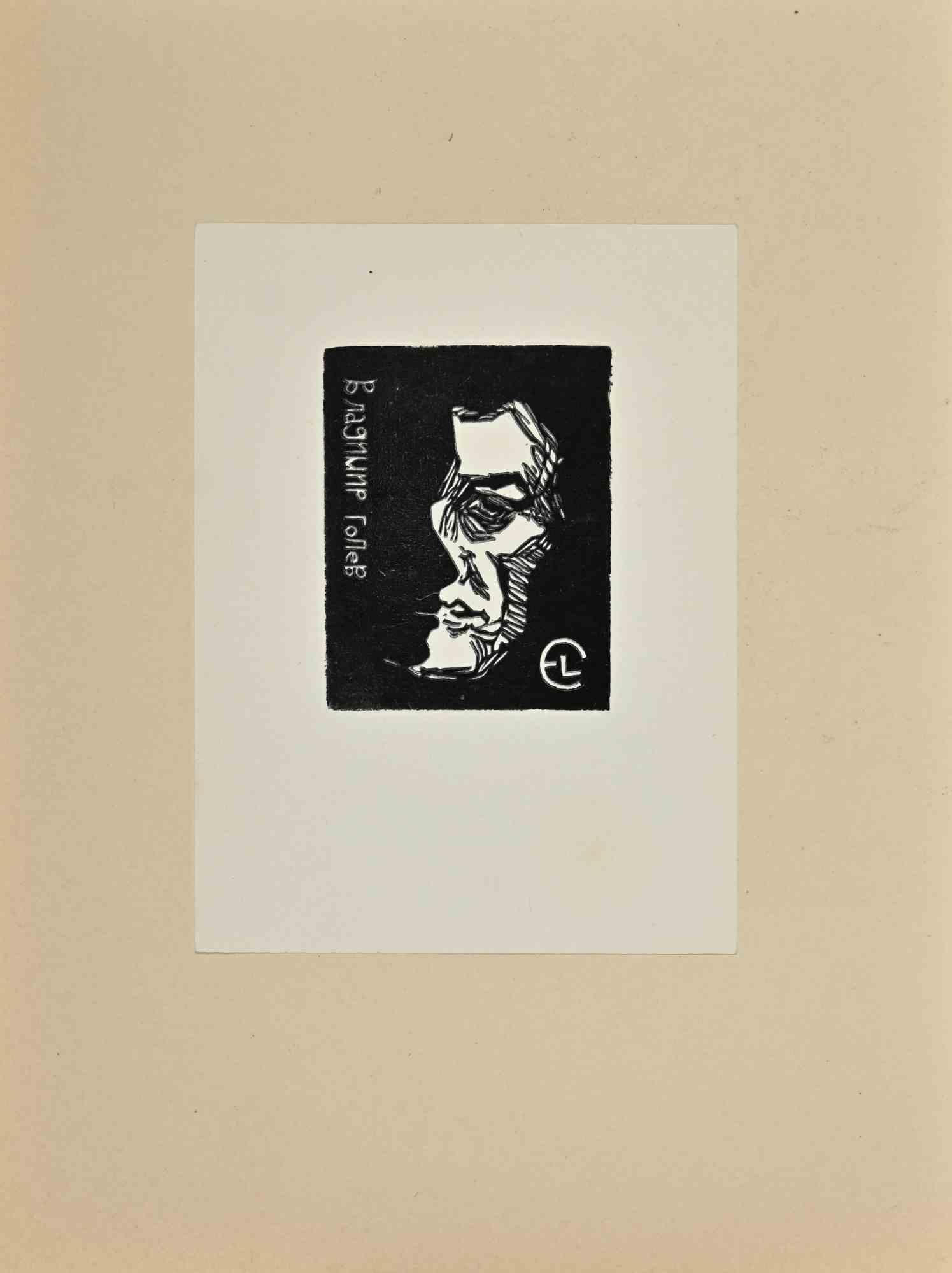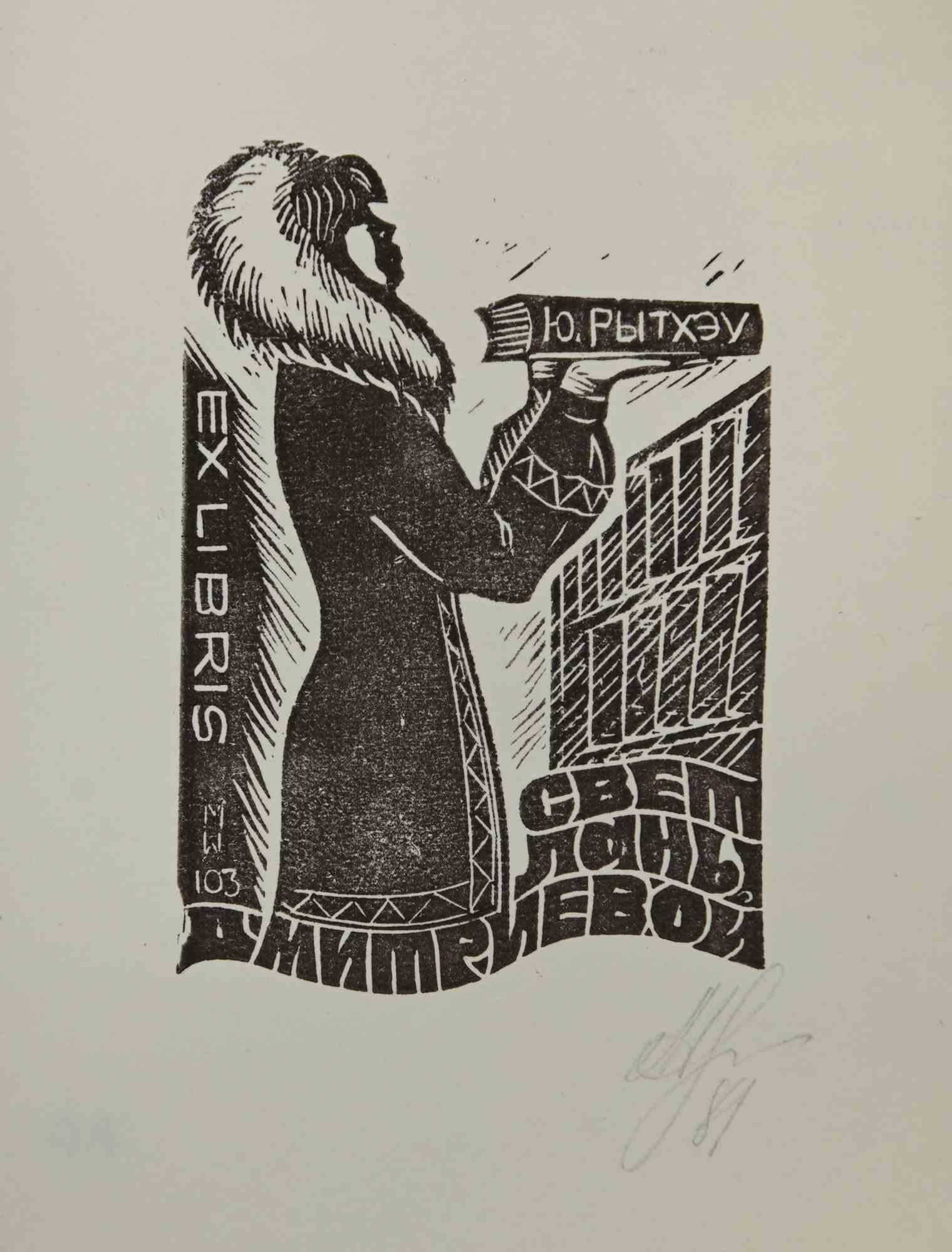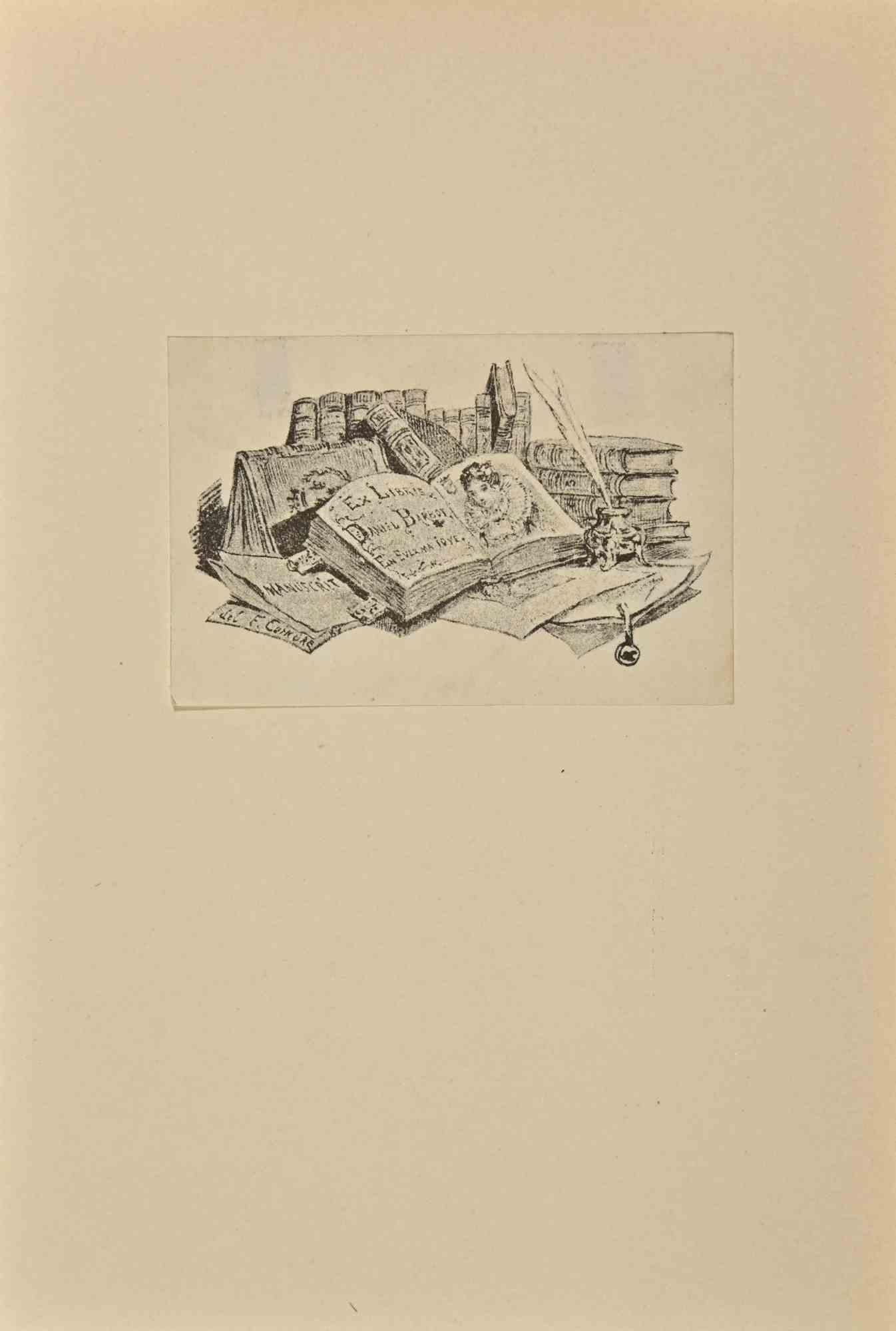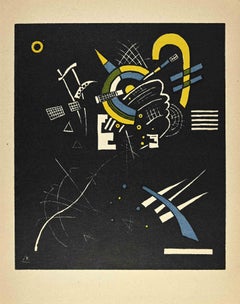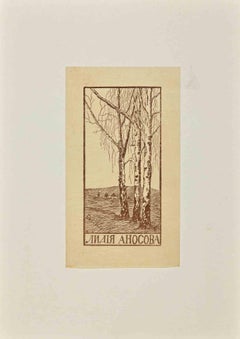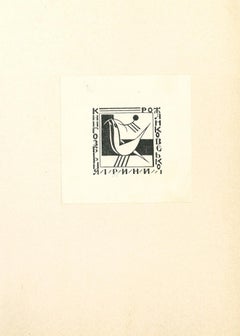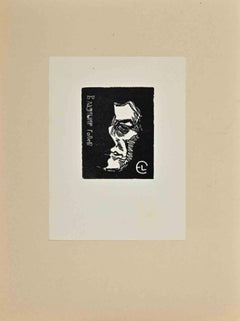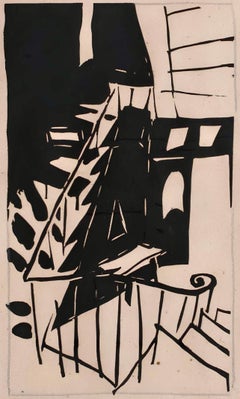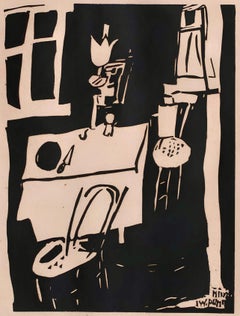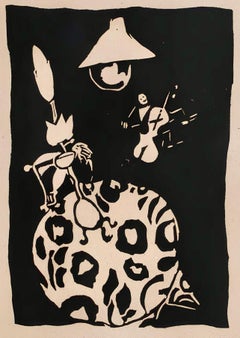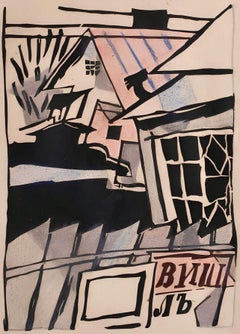Items Similar to Composition - Woodcut Print- Early 20th Century
Want more images or videos?
Request additional images or videos from the seller
1 of 2
UnknownComposition - Woodcut Print- Early 20th CenturyEarly 20th Century
Early 20th Century
$122.64
$188.6835% Off
£93.25
£143.4535% Off
€104
€16035% Off
CA$172.04
CA$264.6835% Off
A$187.97
A$289.1835% Off
CHF 98.86
CHF 152.0935% Off
MX$2,259.84
MX$3,476.6835% Off
NOK 1,244.73
NOK 1,914.9735% Off
SEK 1,168.63
SEK 1,797.9035% Off
DKK 792.12
DKK 1,218.6435% Off
About the Item
Compositionl is an original Contemporary Artwork realized in the early 20th Century.
Original B/W woodcut print on ivory-colored paper.
The work is glued on cardboard.
Total dimensions: 21 x 15 cm.
Mint conditions.
The artwork represents a minimalistic, clean design, a figure behind a shape with a wings on the lower, dreamy-like world, through preciseness and congruous colors.
- Creation Year:Early 20th Century
- Dimensions:Height: 3.75 in (9.5 cm)Width: 2.76 in (7 cm)Depth: 0.04 in (1 mm)
- Medium:
- Movement & Style:
- Period:
- Framing:Framing Options Available
- Condition:Insurance may be requested by customers as additional service, contact us for more information.
- Gallery Location:Roma, IT
- Reference Number:Seller: M-1200631stDibs: LU65038179602
About the Seller
4.9
Platinum Seller
Premium sellers with a 4.7+ rating and 24-hour response times
1stDibs seller since 2017
7,790 sales on 1stDibs
Typical response time: 1 hour
- ShippingRetrieving quote...Shipping from: Grasse, France
- Return Policy
Authenticity Guarantee
In the unlikely event there’s an issue with an item’s authenticity, contact us within 1 year for a full refund. DetailsMoney-Back Guarantee
If your item is not as described, is damaged in transit, or does not arrive, contact us within 7 days for a full refund. Details24-Hour Cancellation
You have a 24-hour grace period in which to reconsider your purchase, with no questions asked.Vetted Professional Sellers
Our world-class sellers must adhere to strict standards for service and quality, maintaining the integrity of our listings.Price-Match Guarantee
If you find that a seller listed the same item for a lower price elsewhere, we’ll match it.Trusted Global Delivery
Our best-in-class carrier network provides specialized shipping options worldwide, including custom delivery.More From This Seller
View AllComposition - Woodcut after Vasilij Kandinskij - mid-20th century
Located in Roma, IT
Composition is a woodcut print realized in the mid-20th Century after Wassily Kandinsky (1886-1944).
Good condition on a white cardboard.
Monogrammed by the artist on the lower lef...
Category
Mid-20th Century Abstract Abstract Prints
Materials
Etching, Aquatint
Ex Libris - Woodcut - Early 20th Century
Located in Roma, IT
Ex Libris - is a Modern Artwork realized in early-20th century.
Ex Libris. B/W woodcut on ivory paper.
The work is glued on cardboard.
Total dimensions: 21x 15 cm.
Good condit...
Category
20th Century Modern Figurative Prints
Materials
Woodcut
$123 Sale Price
30% Off
Ex Libris Minima - Woodcut Print - Early 20th Century
Located in Roma, IT
Ex Libris Minimal is an original Contemporary Artwork realized in the 20th Century.
Original B/W woodcut on ivory-colored paper.
The work is glued on cardboard.
Total dimension...
Category
Early 20th Century Modern Figurative Prints
Materials
Woodcut
$122 Sale Price
35% Off
Ex Libris - Woodcut - Mid 20th Century
Located in Roma, IT
Ex Libris is a Modern Artwork realized in Mid 20th Century.
Woodcut on paper.
The work is glued on ivory cardboard
Total dimensions: 20x 15 cm.
Good conditions.
The artist wan...
Category
Mid-20th Century Modern More Art
Materials
Paper, Woodcut
$106 Sale Price
40% Off
Ex-Libris - woodcut - Mid 20th Century
Located in Roma, IT
Ex-Libris is an Artwork realized in Mid 20th Century.
Woodcut on paper.
Good conditions.
The artwork represents a minimalistic, clean design, through preciseness .
Category
Mid-20th Century Modern Figurative Prints
Materials
Woodcut
$113 Sale Price
40% Off
Ex Libris - Woodcut - Mid 20th Century
Located in Roma, IT
Ex Libris is an Artwork realized in Mid 20th Century.
Woodcut print on paper. The work is glued on ivory cardboard.
Total dimensions: 21 x 15 cm.
Good conditions.
The artist want...
Category
Mid-20th Century Modern Figurative Prints
Materials
Woodcut
$106 Sale Price
40% Off
You May Also Like
Pougny, Composition, Pougny, dix linogravures originales, 1914-1920 (after)
By Jean Pougny
Located in Southampton, NY
Linocut on vélin vergé ancien paper. Unsigned and unnumbered, as issued. Good condition. Notes: From the folio, Pougny, dix linogravures originales, 1964. Published by Au Vent d'Arle...
Category
1960s Cubist Abstract Prints
Materials
Linocut
$4,076 Sale Price
20% Off
Free Shipping
Pougny, Composition, Pougny, dix linogravures originales, 1914-1920 (after)
By Jean Pougny
Located in Southampton, NY
Linocut on vélin vergé ancien paper. Unsigned and unnumbered, as issued. Good condition. Notes: From the folio, Pougny, dix linogravures originales, 1964. Published by Au Vent d'Arle...
Category
1960s Cubist Abstract Prints
Materials
Linocut
$4,076 Sale Price
20% Off
Free Shipping
Pougny, Composition, Pougny, dix linogravures originales, 1914-1920 (after)
By Jean Pougny
Located in Southampton, NY
Linocut on vélin vergé ancien paper. Unsigned and unnumbered, as issued. Good condition. Notes: From the folio, Pougny, dix linogravures originales, 1964. Published by Au Vent d'Arle...
Category
1960s Cubist Abstract Prints
Materials
Linocut
$4,076 Sale Price
20% Off
Free Shipping
Pougny, Composition, Pougny, dix linogravures originales, 1914-1920 (after)
By Jean Pougny
Located in Southampton, NY
Linocut on vélin vergé ancien paper. Unsigned and unnumbered, as issued. Good condition. Notes: From the folio, Pougny, dix linogravures originales, 1964. Published by Au Vent d'Arle...
Category
1960s Cubist Abstract Prints
Materials
Linocut
$4,076 Sale Price
20% Off
Free Shipping
"In Memorium Rene Beeh" original woodcut
Located in Henderson, NV
Medium: original woodcut. This impression on laid paper was printed in Germany in 1922 for the rare Ganymed portfolio "Das vierte Jahrbuch der Marees Gesellschaft" and published in M...
Category
1920s Expressionist Prints and Multiples
Materials
Woodcut
Constructivist Abstract Lithograph From Album MA 1921
By Sándor Bortnyik
Located in Cotignac, FR
A folio sheet from the Album MA by Sándor Bortnyik. Signed in pencil by the artist bottom right, numbered in pencil bottom left, number 50 from the edition of 140. Presented in plain...
Category
Late 20th Century Abstract Abstract Prints
Materials
Paper, Lithograph
More Ways To Browse
Tikva Robert Indiana
Twombly Natural History
Unsigned Joan Miro Lithographs
Untitled 23 Agam
Victor Vasarely Chess
Vija Celmins Poster
Vintage Plakate Original
Vintage Posters Hundertwasser
War Is Over Yoko
Wong Shue
Yaacov Agam Night
Angkor Wat
Antique Oil Painting Hunting Large
Jerusalem Cross
Maori Art
Maurice Chevalier
Mexican Angel
Michel Roux
